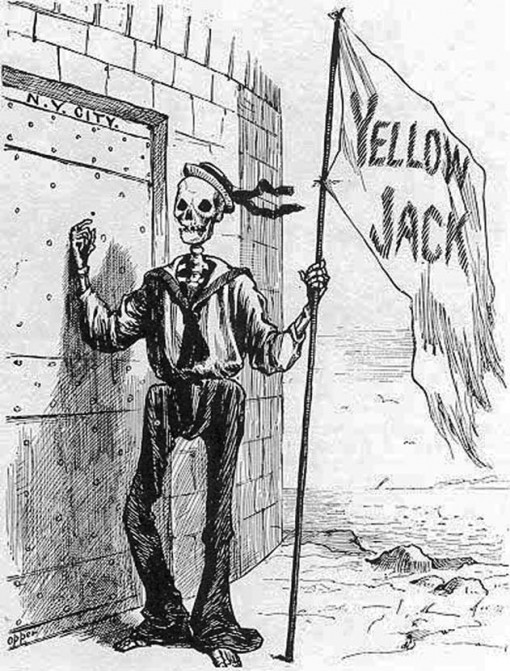 Yellow Fever Plot of 1864 Targeted Lincoln, U.S. Cities, Mathew W. Lively, Civil War Profiles Weblog, July 13, 2014.
Yellow Fever Plot of 1864 Targeted Lincoln, U.S. Cities, Mathew W. Lively, Civil War Profiles Weblog, July 13, 2014.Today we know that Yellow Fever is a virus that is spread through the bite of infected mosquitoes. But during the Civil War, which occurred prior to the discovery of germs being the source of disease, medical science and the lay population believed Yellow Fever could be contracted from direct exposure to those who were infected, primarily through contact with “black vomit.” It was this belief that led Blackburn to “contaminate” clothing for distribution.
The island of Bermuda was a major base of blockade running for the Confederacy and when a Yellow Fever epidemic occurred there in the summer of 1864, Dr. Blackburn, who had extensive experience treating the disease in the Deep South, traveled from Canada to Bermuda to lend his expertise in controlling the outbreak. While on the island, Blackburn took the soiled bedding and clothing of infected patients and packed them into trunks with new shirts and coats in an effort to “infect” the unused garments with Yellow Fever particles.
Blackburn then traveled to Halifax, Nova Scotia, in June 1864 with five trunks and one valise of infected clothing. Once there, he offered a man named Godfey Hyams the sum of $100,000 to smuggle the trunks into “Washington City, to Norfolk, and as far South” as he could go “where the Federal Government held possession and had the most troops.” He instructed Hyams to dispose of the new clothing by auction with the exception of the valise, which was to be delivered by express to President Lincoln as a gift. Blackburn also specified the contents of the largest trunk were to be sold in Washington, D.C., callously remarking: “It will kill them at sixty yards.”
Mathew W. Liverly's online article is continued at Civil War Profiles July 13, 2014
Image Source: Frank Leslie's Illustrated Newspaper, provided by Matthew Lively.


No comments:
Post a Comment